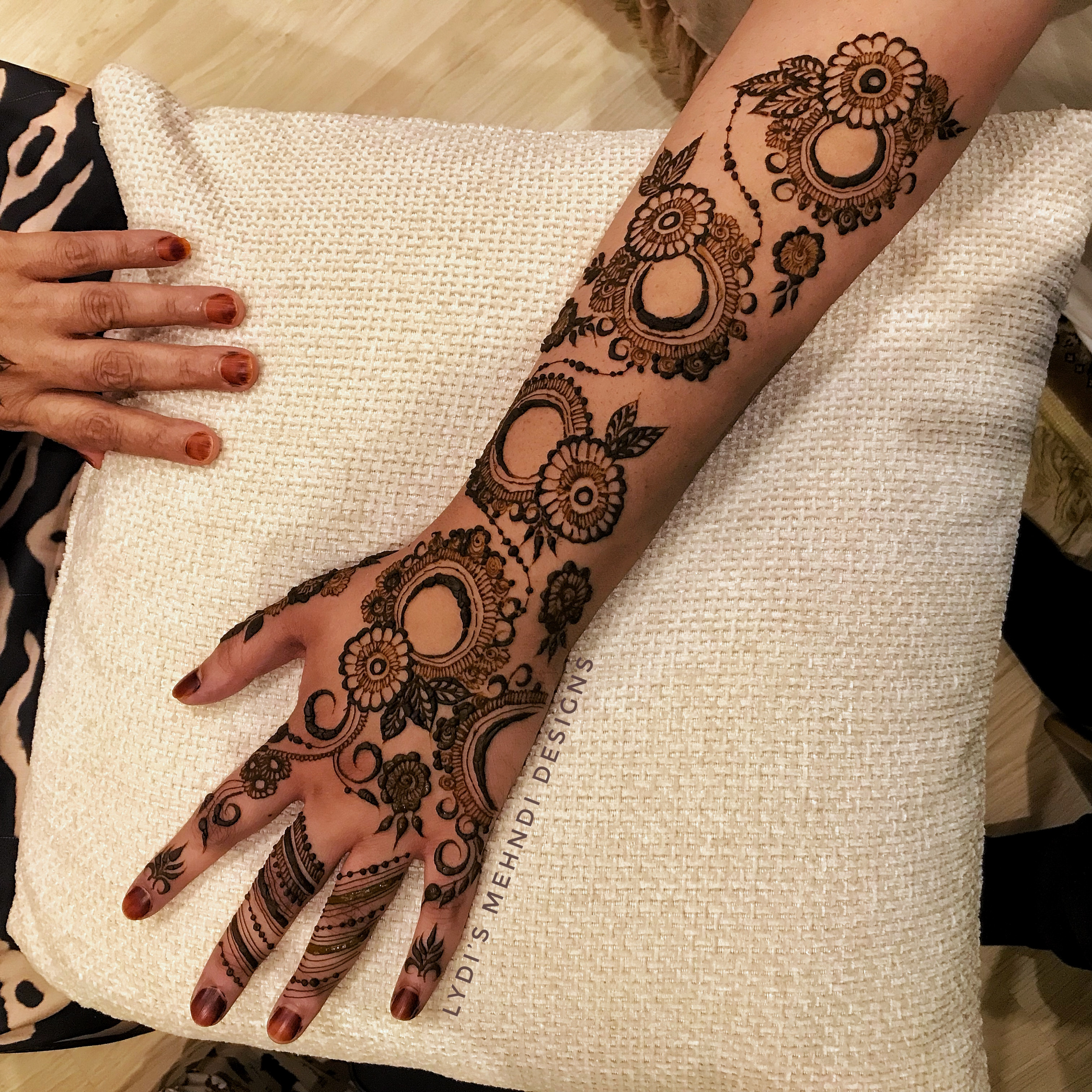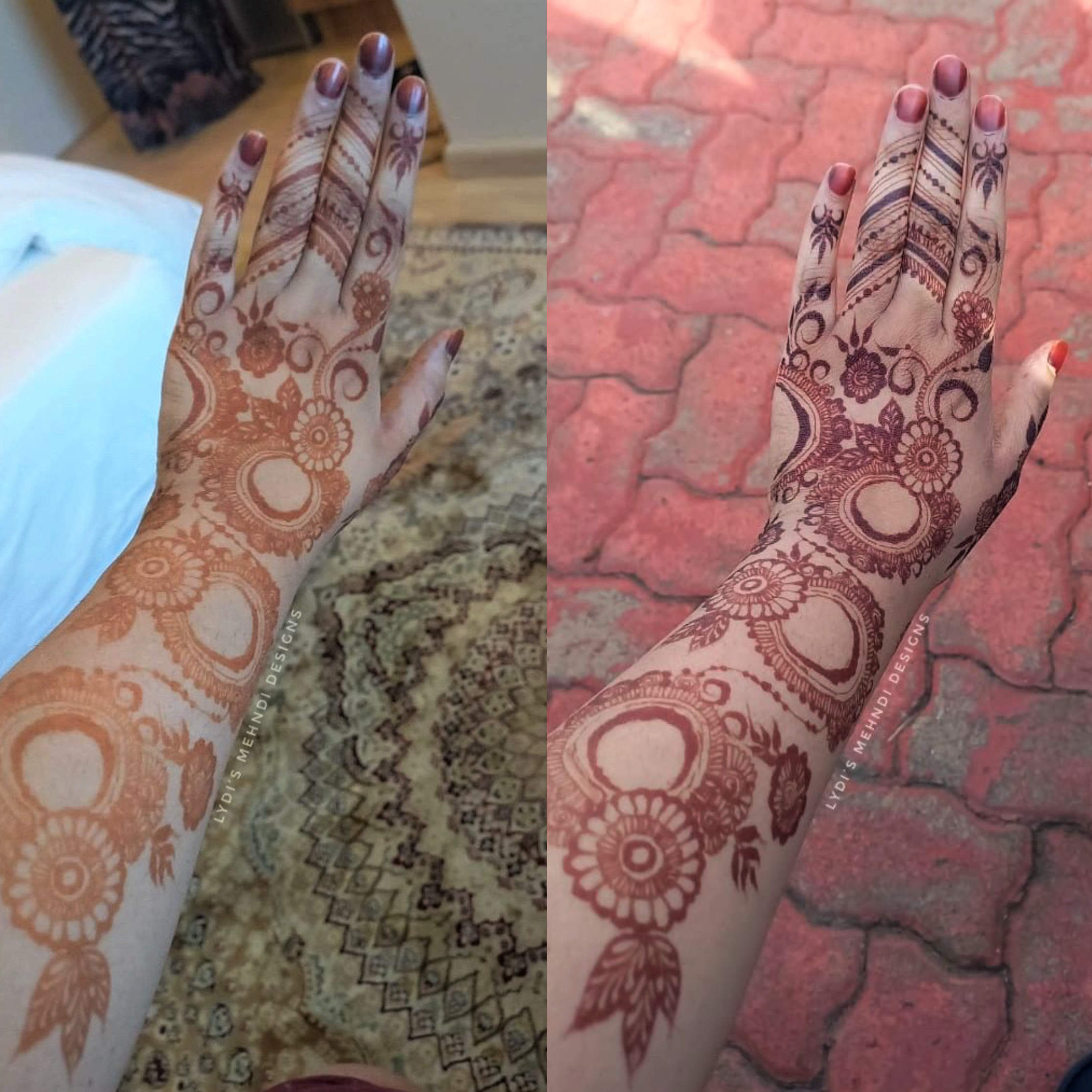Henna tattoos, a beautiful form of temporary body art, are a fantastic way to adorn your skin with intricate designs without the commitment of permanent ink. If you’re considering getting a henna tattoo, one of the first questions you might have is: “How long will it last?” The answer, while not set in stone, depends on several factors, but here’s a general overview.
Generally speaking, a henna tattoo using natural henna will last for approximately 2 to 3 weeks. Initially, for the first 3 to 5 days, your henna stain will appear at its darkest and most vibrant. After this initial period, it will gradually begin to fade as your skin naturally exfoliates.
 Intricate henna tattoo design on hand, showcasing the beauty of temporary body art.
Intricate henna tattoo design on hand, showcasing the beauty of temporary body art.
This fading process is directly linked to your skin’s natural exfoliation cycle. Your skin cells are constantly renewing, and the outer layers are shed every 2 to 3 weeks. Henna stains the top layers of the skin, so as these layers naturally shed, the henna design fades with them. Daily activities also contribute to this process. Regular washing, contact with fabrics, and exposure to everyday elements all encourage skin cell turnover, leading to the gradual disappearance of your henna tattoo.
 Elegant henna patterns on hand and arm, examples of beautiful mehndi art.
Elegant henna patterns on hand and arm, examples of beautiful mehndi art.
Factors That Influence Henna Tattoo Longevity
While the 2-3 week timeframe is typical, several factors can affect how long your henna tattoo lasts and how vibrant the stain remains.
Quality of Henna Paste
The quality of the henna paste is paramount. Using 100% natural henna is crucial for a long-lasting and dark stain. High-quality henna is rich inlawsone, the dye molecule that binds with the skin to create the tattoo. Conversely, pre-made henna cones or “henna tubes” often contain additives and lower quality henna, resulting in a lighter and less durable stain. These inferior products may fade much quicker.
Water Exposure
Water is not a friend to developing henna stains, especially in the initial stages. Excessive water exposure, particularly while the stain is still oxidizing and darkening, can hinder the process. It’s advisable to minimize contact with water immediately after henna paste removal to allow the stain to reach its full potential.
Warmth
Warmth enhances the henna staining process. Keeping the henna paste warm while it’s on your skin helps to deepen the stain. Similarly, after removing the paste, keeping the area warm can continue to encourage oxidation and a richer color.
Oils for Paste Removal
When removing the dried henna paste, using natural oils like coconut oil, olive oil, Vicks VapoRub, or Vaseline is beneficial. These oils help to gently remove the paste while also moisturizing the skin and protecting the developing stain. They create a barrier that can aid in a darker and longer-lasting tattoo.
 Henna stain progression, showing initial orange color and development to deep reddish-brown.
Henna stain progression, showing initial orange color and development to deep reddish-brown.
Exfoliation Rate
Anything that speeds up skin exfoliation will shorten the lifespan of your henna tattoo. This includes:
- Frequent handwashing: While hygiene is important, excessive washing, especially with harsh soaps, can cause the henna to fade faster, particularly on hands.
- Sanitizers: Alcohol-based hand sanitizers can also accelerate fading.
- Swimming: Chlorine in swimming pools and prolonged water immersion can contribute to quicker fading.
- Harsh chemicals and detergents: Direct contact with cleaning products can also lift the henna stain.
Tips to Prolong Your Henna Tattoo
To enjoy your beautiful henna art for as long as possible, consider these tips:
- Choose natural henna: Opt for artists who use fresh, natural henna paste for the best and longest-lasting results.
- Minimize water exposure initially: Keep the henna area dry for the first 12-24 hours after paste removal.
- Apply oil: Regularly moisturize your henna tattoo with natural oils like coconut or olive oil to keep the skin hydrated and slow down exfoliation.
- Avoid harsh soaps and sanitizers: Use gentle cleansers and try to limit the use of harsh sanitizers directly on the henna design.
- Pat skin dry: After washing, gently pat the area dry instead of rubbing vigorously.
- Limit exfoliation: Avoid scrubbing or using exfoliating products directly on the henna tattoo.
By understanding the factors that affect henna tattoo longevity and following these aftercare tips, you can maximize the lifespan of your temporary body art and enjoy its beauty for weeks.
